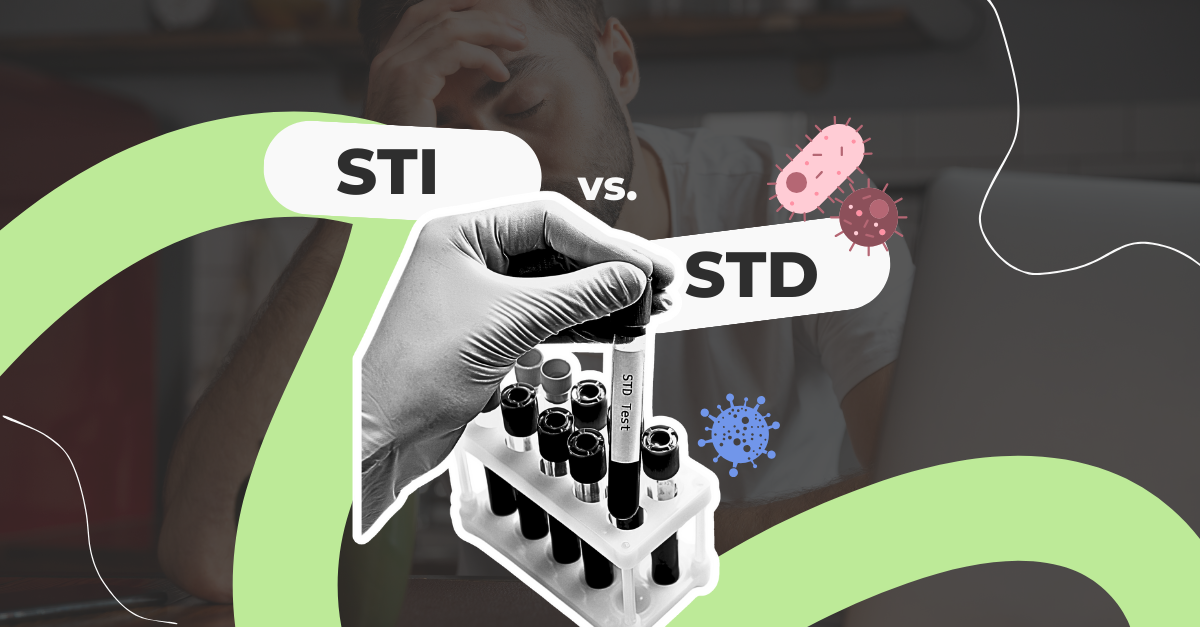Consent is a vital aspect of any healthy and respectful relationship. In order to foster a culture of consent, it is important to understand the various ways in which consent can be obtained. This article aims to explore five effective ways to get consent, highlighting the importance of understanding, communication, strategies, handling rejection, and building trust.
Understanding the Importance of Consent
Before delving into the effective ways of obtaining consent, it is crucial to first comprehend the significance of consent itself. Consent is the voluntary agreement to engage in a specific activity, given with full understanding and without any form of coercion or pressure. It is an active process that requires clear communication and respect for personal boundaries.
Consent plays a fundamental role in fostering healthy relationships and promoting autonomy.Consent must be freely given: Consent must be freely provided, free from coercion, threats, or deception. Valid consent is not granted by someone who is in a disadvantageous position, under pressure, force, or duress, or in a situation when they lack the mental ability to consent (Verywell, 2022)
By respecting an individual's right to consent, we acknowledge their agency and empower them to make informed decisions about their own bodies and experiences. This foundational principle of consent is not only about compliance with rules but also about upholding the dignity and autonomy of every individual.
The Role of Communication in Gaining Consent
Effective communication plays a pivotal role in obtaining consent. It involves verbal and non-verbal cues that allow individuals to express their desires, boundaries, and limitations. Understanding various communication strategies can greatly enhance the ability to gain consent.
Communication is not just about words; it encompasses a wide range of elements that contribute to the overall message being conveyed. Tone of voice, pitch, and even the pace of speech can all influence how a message is received. It is essential to consider these factors when seeking consent, as they can impact the clarity and understanding of the communication exchange.
Verbal and Non-Verbal Cues
Verbal cues involve using clear and explicit language to express desires and boundaries. It is important to be direct and specific, ensuring that all parties involved understand each other's expectations. Non-verbal cues such as body language, facial expressions, and gestures also play a crucial role in understanding consent.
Body language, in particular, can provide valuable insights into a person's comfort level and willingness to engage. Being attuned to subtle cues such as posture and eye contact can help in gauging the other person's feelings and ensuring that consent is actively given and respected.
Active Listening and Consent
Active listening is an integral part of consent. It involves fully engaging in the conversation, paying attention to both verbal and non-verbal cues, and demonstrating empathy and understanding. By actively listening, individuals can ensure that they are obtaining informed and enthusiastic consent.
Active listening goes beyond just hearing the words spoken; it involves processing the information, asking clarifying questions, and reflecting back to ensure mutual understanding. This level of engagement not only fosters effective communication but also establishes a foundation of trust and respect in the consent-seeking process.
Strategies for Seeking Consent
Gaining consent involves employing strategies that prioritize open and honest communication. Make sure the individual providing the permission is completely aware of what they are agreeing to and the consequences of providing or withholding it. This talk shouldn't be too tough if you have a working relationship with them that is based on mutual respect, trust, and confidence (Richmond, 2009) These strategies can be classified into direct and indirect approaches, depending on the situation and individuals involved.
When seeking consent, it is crucial to consider the power dynamics at play and ensure that all parties feel empowered to freely express their boundaries and preferences. Creating a safe and non-judgmental space for communication is essential in fostering mutual respect and understanding.
Direct Approach to Consent
A direct approach involves explicitly asking for consent using clear and straightforward language. This approach ensures that all parties fully understand and are actively involved in the decision-making process. It allows for open and honest communication, leaving no room for confusion or misinterpretation.
Direct communication not only promotes clarity but also demonstrates respect for individual autonomy and agency. By clearly articulating intentions and seeking explicit consent, all parties involved can establish mutual trust and ensure that boundaries are respected throughout the interaction.
Indirect Approach to Consent
Indirect approaches are useful in situations where individuals may feel more comfortable expressing their desires indirectly. This approach involves using non-verbal cues, such as seeking affirmative responses or actively engaging in open-ended dialogue, to gauge consent.
It is important to note that while indirect approaches can be effective in certain contexts, they should always be accompanied by clear and direct communication to confirm understanding and avoid misunderstandings. Balancing indirect cues with explicit verbal communication can help create a comprehensive framework for seeking and obtaining consent.
Handling Rejection and Respecting Boundaries
Respecting boundaries and handling rejection is an integral aspect of obtaining consent. It is essential to acknowledge and accept the answer "no" without questioning or pressuring the individual. Boundaries are unavoidably non-negotiable, impersonal, and a kind of rejection (Kellums, 2021)
Respecting personal boundaries and decisions is key to maintaining trust and fostering a culture of consent.
When someone communicates their boundaries or says "no," it is important to respond with understanding and empathy. By acknowledging and respecting their decision, you demonstrate a commitment to creating a culture of mutual respect and understanding. This not only strengthens relationships but also promotes a sense of safety and autonomy for all individuals involved.
Accepting 'No' as an Answer
Accepting "no" as a valid response is crucial in the pursuit of consent. Individuals have the right to decline or withdraw consent at any point, and it is essential to honor their decision without attempting to persuade or coerce them. Respecting boundaries ensures a safe and secure environment for all parties involved.
Furthermore, accepting a "no" graciously can lead to open and honest communication in relationships. It allows individuals to feel heard and valued, fostering a sense of trust and understanding. By prioritizing consent and respecting boundaries, you contribute to a culture of respect and empathy that benefits everyone.
Respecting Personal Boundaries
Understanding and respecting personal boundaries is foundational to obtaining consent. It is important to be attentive to cues that indicate discomfort or unwillingness, and to immediately adjust behavior accordingly. You can learn more about someone's boundaries and areas of comfort by having clear conversation with them (Verywellmind, 2022)
Respecting personal boundaries creates an environment where individuals feel safe and empowered to give their consent willingly.
By actively listening and observing non-verbal cues, you demonstrate a deep respect for the autonomy and agency of others. This level of attentiveness not only promotes healthy relationships but also cultivates a sense of emotional safety and security. When personal boundaries are respected, individuals are more likely to feel comfortable expressing their needs and desires, leading to more meaningful and fulfilling interactions.
Building Trust and Ensuring Comfort
Building trust and creating a comfortable environment are integral to the process of obtaining consent. Trust creates a foundation of safety and security, allowing individuals to confidently express their desires and boundaries.
The Role of Trust in Consent
Trust is a fundamental component of consent. Individuals are more likely to give informed consent when they trust that their boundaries will be respected and their desires will be honored. Building trust requires open and honest communication, active listening, and consistent respect for personal boundaries.
Creating a Comfortable Environment for Consent
Creating a comfortable environment encourages open communication and the expression of desires and boundaries. It involves setting aside judgement, creating a safe space where individuals feel heard, understood, and respected. By fostering a comfortable environment, individuals can confidently give their informed and enthusiastic consent.
Obtaining consent is an ongoing process that requires active participation, clear communication, and a deep respect for personal boundaries. By understanding the importance of consent, employing effective communication strategies, and respecting personal boundaries, individuals can contribute to a culture that values and prioritizes consent.
Trust in the context of consent is not just about the present moment but also about building a foundation for future interactions. When individuals feel that their boundaries are consistently respected and their desires are acknowledged, they are more likely to engage in ongoing, positive interactions. This long-term trust can lead to deeper connections and a greater sense of safety and empowerment within relationships.
Creating a comfortable environment for consent involves not only physical surroundings but also emotional and psychological factors. It requires active empathy, sensitivity to nonverbal cues, and a commitment to creating a space free from coercion or pressure. By prioritizing comfort and safety in all interactions, individuals can cultivate a culture of mutual respect and understanding, where consent is not just a checkbox but a genuine expression of autonomy and agency.
Direct Phrases for Getting Consent
In the pursuit of consent, using clear and direct language can be immensely beneficial.Prior to doing anything new, check in with your partner, wait for their response, and show respect for it (Dartmouth.edu, 2024)
Here are some examples of phrases that can facilitate open communication and ensure that all parties involved are fully aware and comfortable:
- "Are you comfortable with this?"
- "Do you want to continue?"
- "Is there anything you're not okay with?"
- "Can I do [specific action]?"
- "I want to make sure we're on the same page, is this okay with you?"
- "Would you like to try [activity]?"
Responding to Consent Violations, Immediate Action and SupportSteps you can take
- Recognize the Seriousness: Understand how serious the situation is, whether someone was pressured, manipulated, or their boundaries were ignored.
- Keep Records: If you can, write down what happened. It can help if further action is needed.
- Encourage Reporting: Support the person in reporting what happened to the right people, like authorities or support services.
- Get Professional Support: Suggest they seek help from a counselor or therapist for emotional support and guidance.
- Push for Accountability: Support efforts to hold the person responsible for their actions to stop similar things from happening again.
Prioritizing Consent at Calmara.ai.
At Calmara.ai, we are committed to fostering a culture of respect, understanding, and consent in every interaction on our platform. While our primary focus is on providing a valuable screening tool for visual STIs, we recognize the paramount importance of obtaining consent from all individuals involved.
We encourage our users to engage in open and honest communication with their partners, ensuring that consent is enthusiastically given before any images are uploaded to our platform. We understand that consent is not just a legal requirement but a fundamental aspect of healthy and respectful relationships.
As we continue to develop and improve our platform, we remain dedicated to promoting consent education and awareness. Your health, safety, and well-being are our top priorities at Calmara.ai, and we are here to support you every step of the way. Together, let's create a safer, more respectful online environment where consent is valued and upheld.






